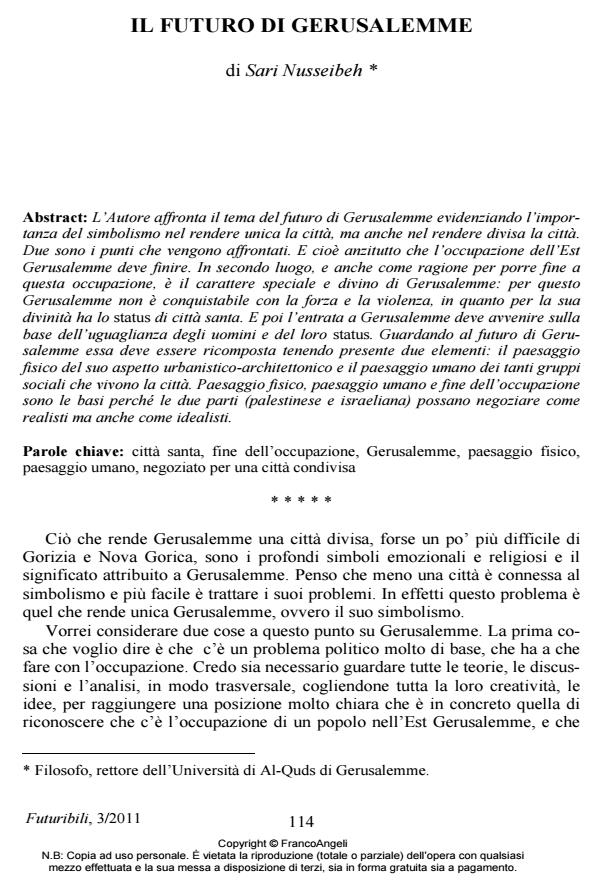The future of Jerusalem
Journal title FUTURIBILI
Author/s Sari Nusseibeh
Publishing Year 2012 Issue 2011/3
Language Italian Pages 7 P. 114-120 File size 221 KB
DOI 10.3280/FU2011-003007
DOI is like a bar code for intellectual property: to have more infomation
click here
Below, you can see the article first page
If you want to buy this article in PDF format, you can do it, following the instructions to buy download credits

FrancoAngeli is member of Publishers International Linking Association, Inc (PILA), a not-for-profit association which run the CrossRef service enabling links to and from online scholarly content.
The author tackles the future of Jerusalem highlighting the importance of symbolism in making the city unique but also in making the city divided. There are two points that are addressed. That is, first, that East Jerusalem must end the occupation. Secondly, and also as a reason to put an end to this occupation, it is the special and divine character of Jerusalem: why Jerusalem is not conquerable by force and violence, as to his divinity has the status of holy city. And then the entry in Jerusalem must be on the basis of equality of men and their status. Looking to the future of Jerusalem, it must be reconstructed taking into account two elements: the physical landscape of urban and architectural aspects and the human landscape of the many social groups that live in the city. Physical landscape, human landscape, and ending the occupation is the basis for the two parties (Palestinian and Israeli) to negotiate as well as idealists but realists.
Keywords: Città santa, fine dell’occupazione, Gerusalemme, paesaggio fisico, paesaggio umano, negoziato per una città condivisa
Sari Nusseibeh, Il futuro di Gerusalemme. The Nusseibeh-Ayalon agreement in "FUTURIBILI" 3/2011, pp 114-120, DOI: 10.3280/FU2011-003007